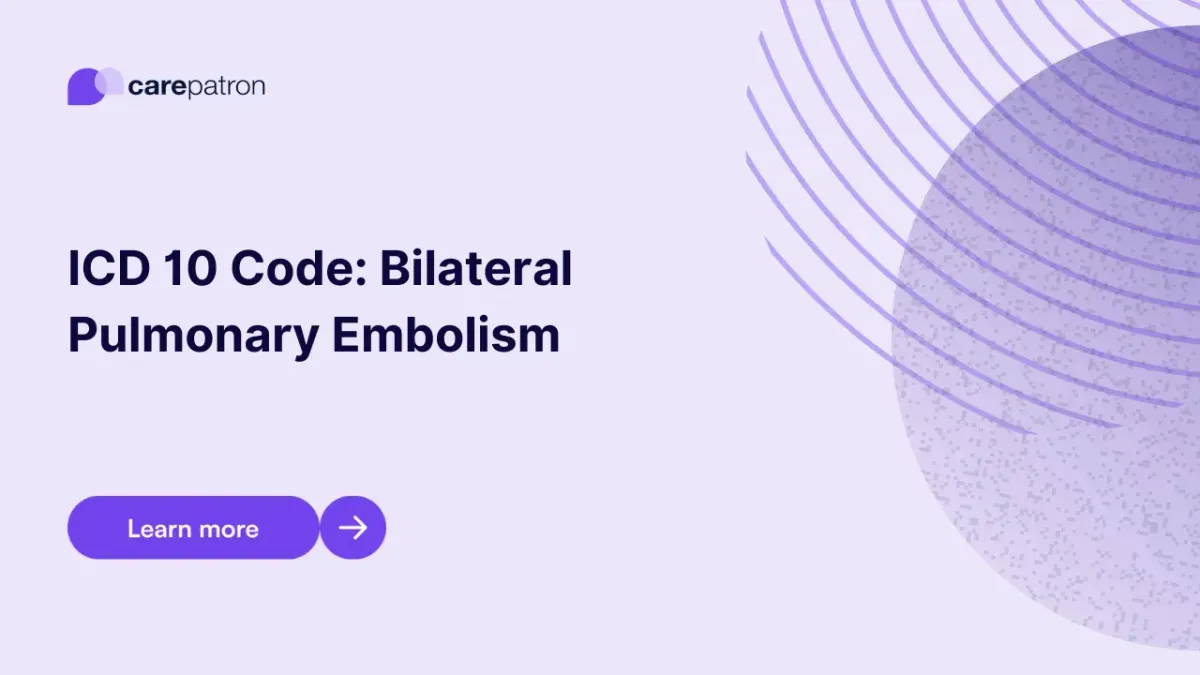
Bilateral Pulmonary Embolism ICD-10-CM Codes
Discover 2025 ICD-10-CM codes for bilateral pulmonary embolism, including updates for septic, chronic, and saddle emboli with or without acute cor pulmonale.
Use Code
Commonly asked questions
Yes, some pulmonary embolism-related codes in the ICD-10-CM system may be considered non-billable when used alone or without the required level of specificity. For example, unspecified codes or codes missing encounter designations (e.g., initial vs. subsequent) may be rejected for reimbursement purposes unless paired with additional diagnostic details.
Pulmonary embolism is typically diagnosed using imaging studies such as CT pulmonary angiography (CTPA), ventilation-perfusion (V/Q) scans, or Doppler ultrasounds to detect deep vein thrombosis. Blood tests, such as D-dimer, arterial blood gases, and ECG, may support the diagnosis in conjunction with clinical symptoms, including chest pain or shortness of breath.
Treatment for pulmonary embolism typically involves anticoagulation therapy, such as heparin or direct oral anticoagulants, to prevent the progression of the clot. In severe cases, such as massive PE with acute cor pulmonale, thrombolytics, surgical embolectomy, or catheter-directed interventions may be required to restore pulmonary artery flow.
EHR and practice management software
Get started for free
*No credit card required
Free
$0/usd
Unlimited clients
Telehealth
1GB of storage
Client portal text
Automated billing and online payments
